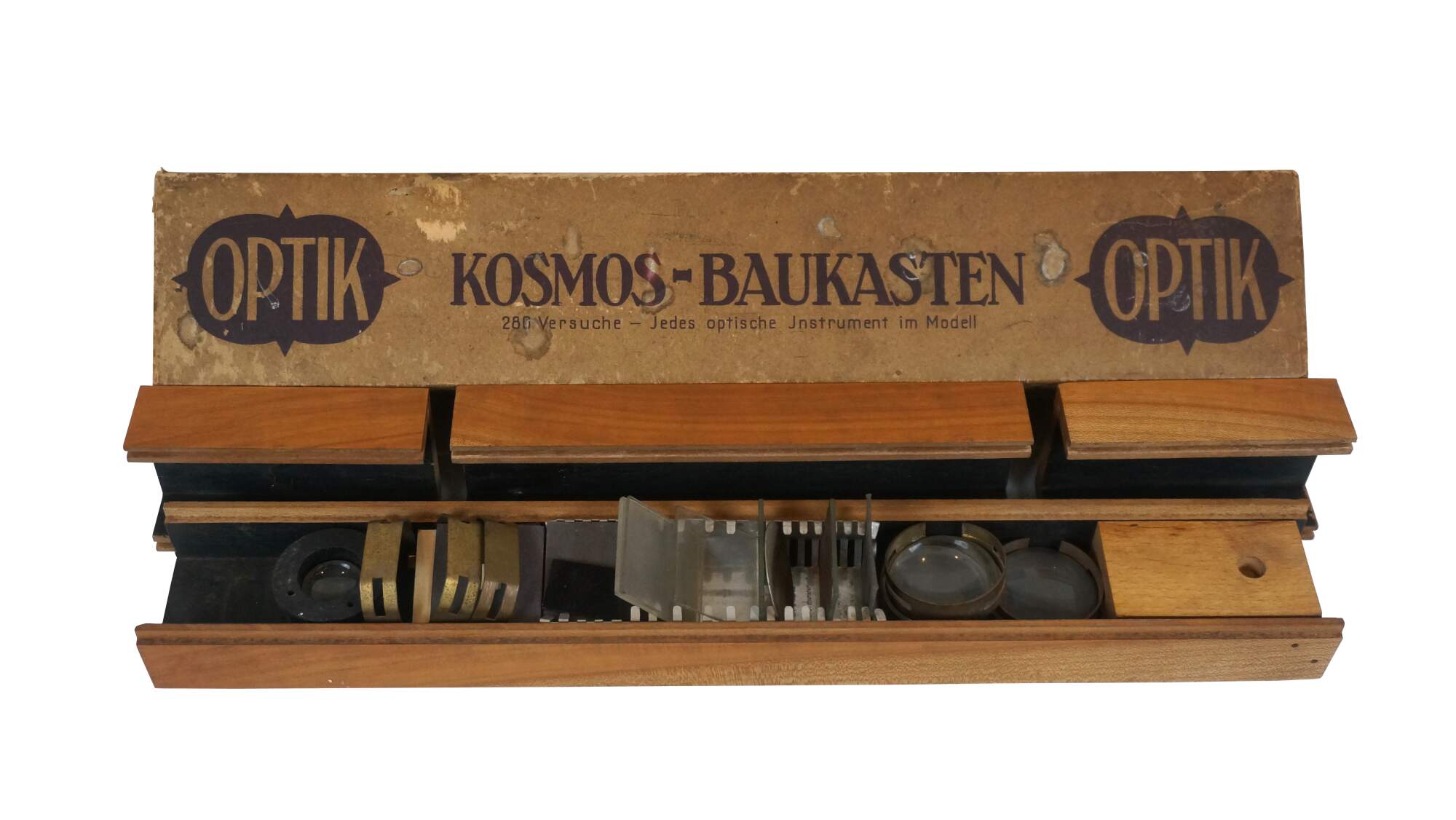
Shipping:
Free Shipping Included
Delivery:
Estimated 2-15 Business Days
Payments:
Credit Card, Check, Cash, PayPal, Apple Pay, Venmo
Returns:
30 Days 100% Money Back Guarantee, Buyer Pays Return Shipping
Description
A very neat and rare Circa 1923 Kosmos-Baukasten Optik kit - a modular optics construction / system / experiment theory of light kit including a variety of apertures, bezels, lenses and holders. Includes original box.
Although these kits were designed for individual use, they were initially marketed as teaching aids, especially for work instruction at elementary and rural schools. In 1927, Wilhelm Fröhlich wrote a textbook tailored for use in work schools using the kits for mechanics, optics, electronics and chemistry (Fröhlich 1927). Simpler outfits, marketed as teaching toys [Lehrspielzeug], were developed in the 1930's and geared towards younger boys. These included the Elektromann (around 1930), Optikus (1933), Technikus (around 1935), All-Chemist (1932) and Radiomann (1934).
Physics and chemistry are not learned from a book like a poem, but through practical experience" (NL Wilhelm HS 1978-43/3). The kits were meant to function as a complete laboratory; at the same time, they were equipped with very simple devices in order to ensure that the first tests did not fail because of the experimental setup being too complicated. Many different instruments could be constructed using only a few basic elements. In some cases, as in the example of the optics kit, the case itself took on the function of an instrument, for example a telescope, projection apparatus or microscope. In his notes about the new version of the optics kit, in which a round pipe similar to the routine optical instruments was to be included, Wilhelm Fröhlich writes that the square cut pipes composed of two connected halves which made up the storage case had been requested by the company at that time "on the one hand, to make the distances between the parts, more specifically the focal distances clear and on the other hand, to avoid the costs associated with rounded parts, for example mirrors and apertures" (NL Wilhelm Fröhlich HS 1978-43/1). At the same time, because the students used the same basic elements in experimental setups with different functions, they were meant to learn to trace these phenomena back to the same basic principles.
"In the late Eighteenth century, testing cabinets, household and travel laboratories became available for sale to anyone wishing to perform chemical analyses: to chemists, as well as doctors, factory owners, agriculturalists, traveling naturalists or lovers of chemistry and mineralogy. From early on, however, testing cabinets were also used by uneducated laymen. In the late Nineteenth and early Twentieth century experiment kits were produced in order to provide access to experimental knowledge at schools as well as at home. These portable laboratories, as they contained not only precisely tuned instruments and other materials, but also school textbooks or instruction manuals, made it possible to learn theory as well as concrete, practical application. In 1903, the owners of the Franckh'sche Verlagshandlung, Euchar Nehmann and Walter Keller, founded the society "Gesellschaft für Naturfreunde" in an effort to bring laymen interested in education and nature closer together and to provide them with valuable information about nature and the natural sciences. By 1904, they had established "Kosmos. Handweiser für Naturfreunde," a monthly journal for the society in which also experiments were presented and discussed. In the 1920's the first experiment kits were produced in the company's teaching aid department under the direction of the Swiss teacher Dr. Wilhelm Fröhlich (1892-1969). Between 1921 and 1930, the firm developed the Kosmos-Baukästen Electro (1921), Optics (1923), Mechanics (around 1924/1925), Chemistry (around 1927) and Radio (1930). Later, the company went on to produce experiment kits for other subjects such as, for example, astronomy (around 1928), geometry (around 1928), agriculture (1936), microscopy (1936), biology (around 1935) and engineering (around 1937)." (Source: The Virtual Laboratory)
Condition
Good Overall - Gentle wear commensurate with use/age, missing some pieces - not complete
Dimensions
15.75" x 2.375" x 2.25" (Width x Depth x Height)